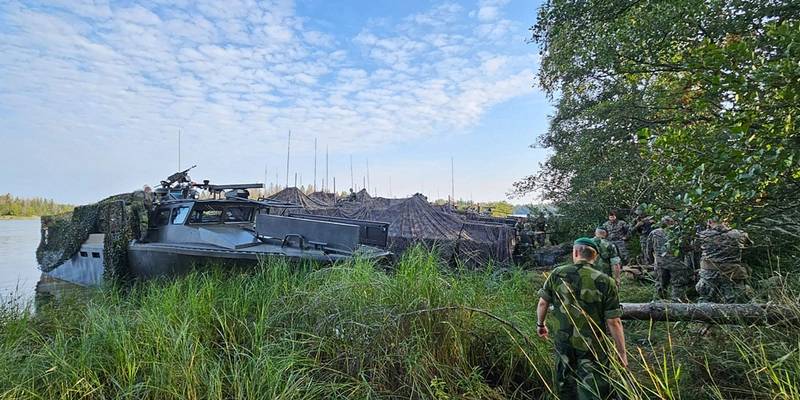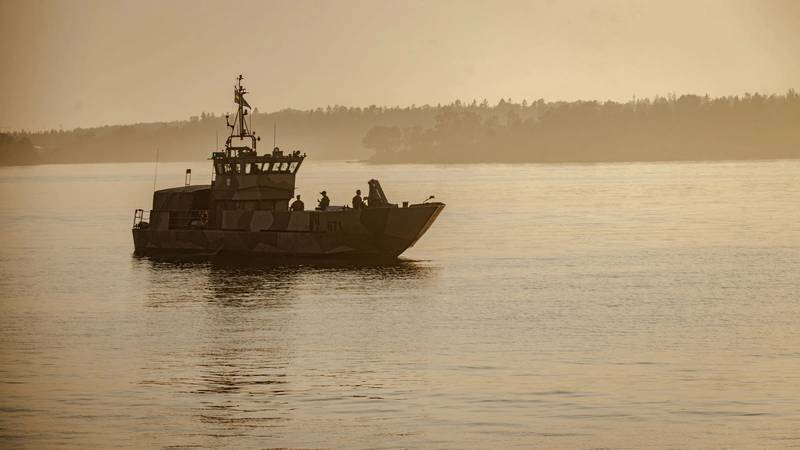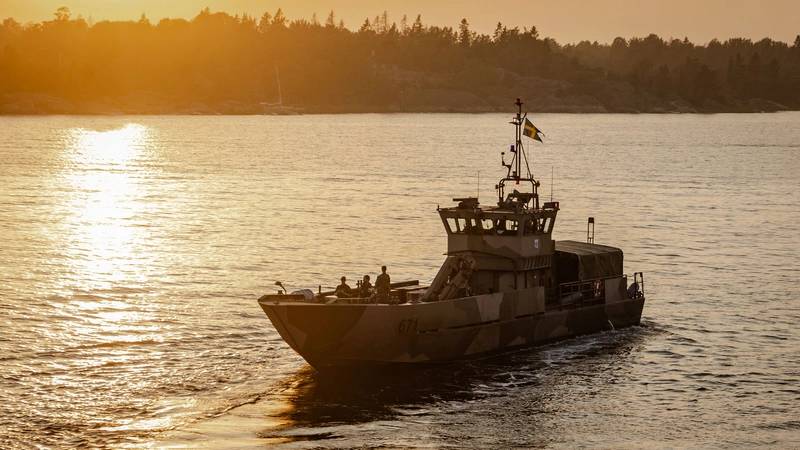Swedish, U.S. Marines Team @ Exercise Archipelago Endeavor 2024
Swedish and U.S. Marines gathered in Sweden’s rocky coastal archipelago to improve their littoral warfighting skills and enhance interoperability during Exercise Archipelago Endeavor 2024 (AE 24).
“This is an annual exercise between Sweden and U.S., and it is the seventh time we conducted it, but it's the first time that we conducting the exercise as an ally. Before that, we have conducted the exercise as a partner,” said Lt. Col. Patrik Berge of the Stockholm Marine Regiment, representing the host nation.
The Stockholm Marine Regiment operates “where the sea meets the land,” and serves as a vital link between naval and army forces. Using small units, fast boats, mines, missiles, and mortars, the regiment is the Swedish Armed Forces' foremost resource in defending the country's many coastal archipelago areas.
The exercise took place over a several week period in August and September 2024 at the Birga Naval Base south of Stockholm, in and around the Stockholm Archipelago.
Berge said approximately 500 Swedish and U.S. Marines and Sailors took part in the exercise, including approximately 225 U.S. personnel from the Marine Rotational Force-Europe (MRF-E), which operated alongside Sweden’s (SWE) 1st and 4th Amphibious Regiments.4
Two Swedish naval vessels took part in the drills — the 234-feet, 2,100 ton, HMSwS Trossö (A264), a patrol craft tender, and HMSwS Loke (671), a 600-class supply vessel equipped for amphibious landings, as well as numerous CB 90 amphibious assault boats.
According to a statement from the Swedish Marines, “AE 24 demonstrates Sweden’s readiness to engage in joint operations, and its commitment to maintaining security in the Baltic Region through pro-active, asymmetric maritime operations.”
“The main aim of the exercise is to enhance the interoperability between Sweden and U.S., especially regarding warfighting in the littorals,” Berge said. “Our training and exercise scenarios have become increasing more challenging and tactically realistic.”
In addition to the training, AE 24 is also a means of experimenting with and demonstrating future amphibious systems to advance technologies and warfighting concepts between Sweden and the U.S.
According to a statement from the Swedish Navy, AE24 is a “vital annual exercise between Sweden and the U.S. aimed at developing joint combat capabilities, particularly in coastal and archipelago areas. It is crucial for building interoperability and deepening the military cooperation between the two nations.”

“AE24 also demonstrates Sweden’s readiness to engage in joint operations and its commitment to maintaining security in the Baltic region through proactive, asymmetric maritime operations,” the statement said.The statement said that AE24 is not only about military readiness, but also about showcasing the development of future amphibious systems and the ongoing technological advancements between Sweden and the U.S.
A Swedish Defence Ministry statement said that, “The Swedish Navy has long maintained a deep and extensive bilateral cooperation with the U.S., and for the Marine Corps, Archipelago Endeavour 24 is a strategically important example of international unit development.”
AE 24 focused on developing joint combat capabilities, particularly in coastal and archipelago areas, with an emphasis on the development of future amphibious systems and technological advancements between the two nations.
“We brought several of our unmanned surface vessels which the Marines used for logistics and surveillance,” said Anthony Mulligan, chief executive officer of Hydronalix, a U.S. company based in Suarhita, Ariz. “Our vessels are highly adaptive, small, portable and can be configured to carry food, water and ammunition; or carry a radar, sonar. The Marines were able to experiment with our boats in this austere archipelagic environment, providing them — as well as our team — valuable real-world experience in how to integrate our vehicles into their distributed maritime operations and best take advantage our capabilities. It’s important to learn what works, what doesn’t work, and how we can make our platforms perform better and provide more utility.”
The Hydronalix boats were developed through a Navy Small Business Innovation Research (SBIR) investment.
“Although we are now allies, we had already have established a great relationship with our Swedish counterparts,” said 2nd Lt. Spencer Tidwell, speaking for the U.S. Marines.
“We take a multi-domain approach to warfare in the littorals, from the sea bed to space, and including cyber and information warfare,” Tidwell said.
“Marines are the only force that can master the littorals — the coastlines and the archipelagos — because we have the ability to control and affect targets on land and sea at the same time.”
During the exercise, Tidwell cited the importance of honing such skills as signature management and self-sufficiency in the field so units can remain in remote and austere locations for extended periods without resupply.
“We're both going to come away from this exercise with a lot a lot more knowledge on both sides,” Tidwell said.
Berge said, “The big thing is interoperability. We want to make sure that our systems work together; our people work together; and our leadership can command, control and plan together effectively.” “We need to test our equipment so we can test different equipment, different techniques and tactics to be better together,” said Berge.
“Swedish and U.S. Marines have strong bonds,” Berge said. “This exercise makes those bonds even stronger.”


